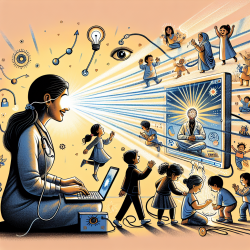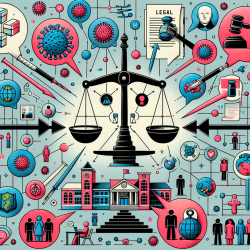Introduction
In the ever-evolving landscape of education and social integration, understanding the nuanced relationship between immigration status, educational attainment, and perceived discrimination is crucial for practitioners working with diverse populations. A recent study published in the International Journal of Environmental Research and Public Health sheds light on this intricate interplay, providing valuable insights that can enhance the skills of practitioners and inform future research.
Key Findings from the Research
The study utilized data from the 10th round of the European Social Survey, encompassing 17,596 participants across ten European countries. The findings revealed a protective effect of higher educational levels against perceived discrimination, a trend observed among both native-born and immigrant populations. However, this protective effect was notably weaker among immigrants.
Specifically, the study found:
- Higher educational levels correlate with lower perceived discrimination.
- The protective effect of education is more pronounced in native-born individuals compared to immigrants.
- Immigration status acts as a moderator, influencing the strength of the association between education and perceived discrimination.
Implications for Practitioners
For speech-language pathologists and other practitioners working with children in diverse settings, these findings highlight the importance of considering both educational attainment and immigration status when addressing issues of perceived discrimination. Practitioners can leverage these insights to tailor interventions that acknowledge the unique challenges faced by immigrant populations.
Here are some practical steps practitioners can take:
- Promote Educational Opportunities: Encourage and facilitate access to educational resources for immigrant families, recognizing education as a tool for empowerment and social integration.
- Foster Inclusive Environments: Create supportive and inclusive environments that mitigate perceived discrimination and promote cultural sensitivity.
- Advocate for Policy Changes: Work with policymakers to address structural barriers that hinder the educational and social advancement of immigrant populations.
Encouraging Further Research
While this study provides a foundational understanding of the dynamics between education, immigration, and discrimination, it also opens avenues for further research. Practitioners and researchers are encouraged to explore:
- The impact of different educational systems on perceived discrimination among immigrants.
- Longitudinal studies examining the long-term effects of educational attainment on discrimination experiences.
- The role of additional factors such as language proficiency, cultural identity, and community support in moderating discrimination.
Conclusion
This research underscores the critical role of education in reducing perceived discrimination, albeit with varying degrees of effectiveness among different populations. By integrating these findings into practice, speech-language pathologists and educators can contribute to more equitable and inclusive outcomes for children and families.
To read the original research paper, please follow this link: Immigration Status, Educational Level, and Perceived Discrimination in Europe.










